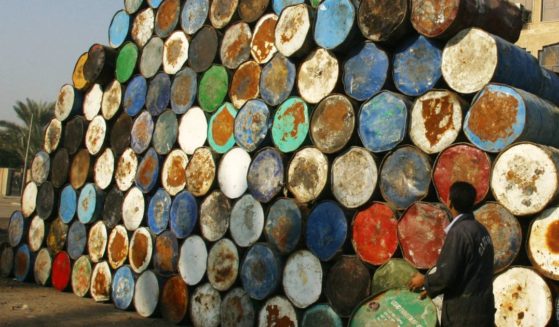Report highlights utility failures in biggest US gas leak
LOS ANGELES (AP) — A blowout at a Los Angeles natural gas well in 2015 that led to the largest-known release of methane in U.S. history was the result of a corroded pipe casing, safety failures by a utility and inadequate regulations, according to an investigation report released Friday.
Southern California Gas Co. failed to investigate previous well failures at the Aliso Canyon storage field and didn’t adequately assess its aging wells for disaster potential before the Oct. 23, 2015, blowout, the report released by the California Public Utilities Commission said.
The disaster led to stricter state regulations and improved policies that would have addressed most of the causes, the report found.
Robert Bea, an engineering professor at the University of California, Berkeley, said the report shows the blowout was a “predictable and preventable disaster” and likened it to oil spills, a dam spillway collapse and deadly wildfires he said were due in part to failures by regulators.
“Collectively, we seem to be using ‘reactive risk mismanagement’: Patch and Pray, Watch it Fail, Fix it Fast, Return to Business As Usual As Soon As Possible,” Bea said. “Several of my colleagues who live in other countries have called this approach as ‘stuck in stupid.'”
The blowout lasted nearly four months and was blamed for sickening thousands of Los Angeles residents, who moved out of their Porter Ranch homes to escape a sulfurous stench and a medley of maladies including headaches, nausea and nose bleeds.
Blade Energy Partners, which conducted the yearslong investigation, said the company should have been able to plug the leak sooner.
SoCalGas has spent more than $1 billion on the blowout with the majority going to temporarily relocate 8,000 families, according to filings with the U.S. Securities and Exchange Commission. The utility still faces more than 390 lawsuits on behalf of approximately 48,500 people.
Residents who live nearby the gas storage field continue to complain about health problems and many, along with some environmental groups, want the facility shut down.
“This root cause analysis highlights gross negligence by SoCalGas and the failure to conduct basic inspections to determine safety of a highly dangerous operation,” Alexandra Nagy, director of Food & Water Watch California, said in a statement. “Nothing short of the immediate shut down of Aliso Canyon will protect residents from harm.”
The field — the largest of its kind in the West at the time of the blowout — stores natural gas in retired oil wells, some dating to the 1940s. It injects gas more than a mile underground into the porous reservoir where crude was once found.
The report criticized inadequate regulations at the time, which allowed the company to inject and withdraw gas into the field through an internal pipe and the casing that surrounded it.
The casing was originally designed as a safety barrier for oil production, but was being used to pump greater volumes of gas in and out of the field under high pressure.
It was that type of casing that ultimately ruptured due to corrosion from water and microbes. Gas seeped up through the earth and eventually blew a gaping crater around the well.
Seven attempts to plug the well were tried over weeks, but none worked. The report said workers failed to conduct proper modeling tests in advance of the so-called kill attempts and didn’t use dense enough fluid and at a high enough rate to accomplish the task.
The report also said the company lacked systems to protect wells from corrosion and surveillance to monitor them in real time.
Investigators found there had been 60 casing leaks before the incident that presented risks to safety and the environment but investigations into their causes were never conducted.
“Furthermore, external corrosion on production casing had been identified in several wells,” the report said. “Based on the data reviewed by Blade, no investigation of the causes was performed, and, therefore, the extent and consequences of the corrosion in the other wells was not understood.”
Regulations also failed to require inspections of the thickness of casing walls and those tests were not routinely conducted by the utility.
The well that ruptured was on a list of 20 old wells the company identified in 1988 to determine their condition. Over a two-year period, however, the well was not among the seven tested, which found corrosion on five had worn away 20% to 60% of the wall thickness of their casings.
SoCalGas in a press release said the report showed it was in compliance with state regulations at the time of the blowout and it touted its safety enhancements since.
New requirements put into place by state regulators after the blowout led to many of the wells being overhauled and updated and many being sealed. The field is also not allowed to operate at full capacity.
Two state regulatory agencies, the CPUC and the Department of Conservation’s oil and gas division, will use the findings to produce reports of their own that could lead to fines.
SoCalGas reached a $120 million court settlement with the state attorney general. It was convicted in Los Angeles Superior Court of failing to quickly report the leak to state authorities and agreed to a $4 million settlement with the Los Angeles County district attorney.
The Western Journal has not reviewed this Associated Press story prior to publication. Therefore, it may contain editorial bias or may in some other way not meet our normal editorial standards. It is provided to our readers as a service from The Western Journal.
Truth and Accuracy
We are committed to truth and accuracy in all of our journalism. Read our editorial standards.












